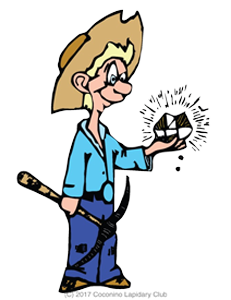To the great advantage of the beauty of their art, Chinese carvers of jade were guided by themes and decorative motifs in the shaping of their carvings and the choices of decorative motifs adorning them[Ref1-7].
In the Neolithic Era of China ritual jade carvings found in burials reflecting the cosmology of the heavens and the social status of the buried person appeared. The bi disc appeared circa 3400 BC and the cong appearing circa 3300 BC were complementary to each other[Ref8,9]. The circular bi disc with a hole at its center as shown in Figure 1 represented the heavens and the cong with its square cross section with a hole at its center as shown in Figure 2 represented the earth below appeared. Jade carvings of burial objects which reflected attributes of social status, such as authority and power such as the beautiful blade shown in Figure 3 and the coiled dragon amulet shown in Figure 4 appeared in the late Neolithic era
Themes and design motifs from the philosophies of Taoism beginning in the 3rd-4th Centuries BC[Ref10] and Confucianism beginning within the time span of 551-479 BC[Ref11], the Buddhist Religion from the 1st Century AD[Ref12], and mythology with a timeline spanning from 36,0000 years before The Creation to 2852 BC[Ref13] have been lasting influences in jade and jadeite carving into the present day
Taoism embraces nature in its emphasizing the coexistence and harmony between humanity and nature[Ref14]. These relationships can be seen in the jade mountain carvings featuring notable men, such as scholars or leaders of society or of villagers in forest settings as shown in Figures 5 and 6 Appreciation of nature in Taoism also appears in the rich symbology accorded to both animal and plant forms adorning carved jade art objects as shown and described in Figures 7-10.
The innate respect accorded to men of learning and leaders of the royal court and of society in Confucianism[Ref15] may also have influenced the symbology of jade mountain carvings and statues of court functionaries as shown in Figures 11-15.
Four categories of images of different levels of beings in Buddhist cosmology are found in Chinese jade carvings: images of The Buddha, images of Bodhisattvas, images of deities, spirits, heavenly beings, kings of wisdom, and guardian god that serve as protectors of Buddhism[Ref17]. Carved images of The Buddha and other deities are shown and described in Figures 16-22.
Themes from Chinese mythology have been richly incorporated in jade carvings. Carvings of historical humans, animals, plants, and places from Chinese mythology are shown and described in Figures 23-29.
Neolithic Ritual and Ornamental Jade Carvings




Jade and Jadeite Carvings with Taoist Themes and Motifs






Longevity and springtime, where somewhat ironically the monkey can symbolize trickery[Ref]30,32.
Jade Carvings with Confuscian Themes and Motifs








the founder of Buddhism, Quinlong Period (1736-1795)[Ref43,44].



[Ref49,50].

Jade and Jadeite Carvings with Themes and Motifs from Chinese Mythology


Creator of earth, holding a shovel and emerging a cave with whorls of
smoke and a dragon beneath[Ref55,56].





REFERENCES
Ref 1. https://www.gia.edu/doc/Jade-Forms-from-Ancient-China.pdf
Ref 2. https://www.metmuseum.org/toah/hd/daoi/hd_daoi.htm
Ref 3. https://www.metmuseum.org/toah/hd/budd/hd_budd.htm
Ref 4.
Ref 5. https://en.wikipedia.org/wiki/Chinese_jade
Ref 7. http://chinabuddhismencyclopedia.com/en/index.php/The_Mythology_of_Jade
Ref 8. https://en.wikipedia.org/wiki/Bi_(jade)
Ref 9. https://en.wikipedia.org/wiki/Cong_(vessel)
Ref 10. Taoism Origins, Taoism History, Taoism Beliefs
Ref 11. Professing Faith: For Confucius, teaching and service was his prayer – Redlands Daily Facts
Ref 12. https://en.wikipedia.org/wiki/Chinese_Buddhism
Ref 13. https://en.wikipedia.org/wiki/Timeline_of_Chinese_mythology
Ref 14. https://news.cgtn.com/news/3d3d674d7a45444f34457a6333566d54/index.html
Ref 15. https://en.wikipedia.org/wiki/Confucianism
Ref 16. https://www.masonkay.com/chinese-art-symbols
Ref 17. https://en.wikipedia.org/wiki/Buddhist_deities
Ref 21. https://www.travelchinaguide.com/intro/history/prehistoric/longshan_culture.htm
Ref 22.
Ref 24. https://www.gia.edu/doc/Jade-Forms-from-Ancient-China.pdfhttps://www.travelchinaguide.com/attraction/zhejiang/shaoxing/orchid_pavilion.htm
Ref 25 https://www.travelchinaguide.com/attraction/zhejiang/shaoxing/orchid_pavilion.htm
Ref 26. https://www.metmuseum.org/toah/hd/schg/hd_schg.htm
Ref 27. http://harn.ufl.edu/linkedfiles/k-12resource-chinesejades.pdf
Ref 30. http://factsanddetails.com/china/cat7/sub40/item260.html
Ref 31. https://www.sothebys.com/en/auctions/ecatalogue/2012/ceramics-vo-hk0393/lot.3256.html
Ref 32. https://www.chairish.com/product/834647/green-jadeite-carving-of-peach-with-young-monkeys
